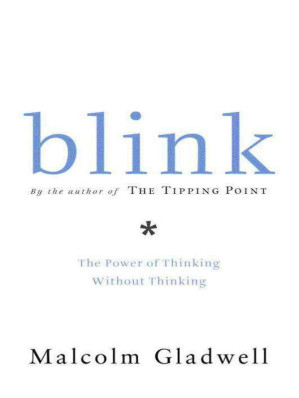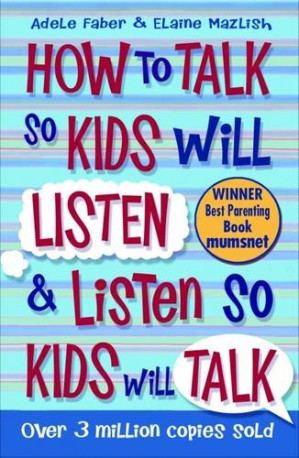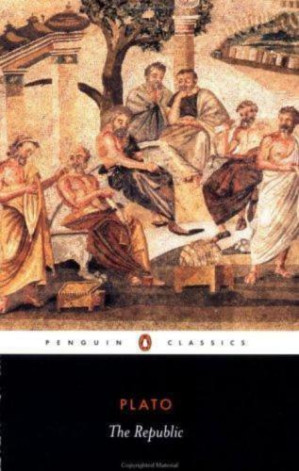The power of thin-slicing
Our unconscious can find patterns in situations and behavior based on very narrow slices of experience.

Book summary
by Malcolm Gladwell
The Power of Thinking Without Thinking
Power of thinking without thinking in snap decisions
Topics
Read this book as an exploration of your own decision-making processes. Use Readever to highlight Gladwell's insights about rapid cognition and intuitive thinking. After each chapter, use the AI to analyze examples from your own life where snap judgments were accurate versus when they were influenced by bias or stress.
Things to know before reading
Blink explores the fascinating world of rapid cognition—the kind of thinking that happens in a blink of an eye. Gladwell reveals how our unconscious mind makes snap judgments that can be remarkably accurate, and how we can learn to harness this powerful ability while avoiding its pitfalls.
Gladwell's exploration of rapid cognition reveals both the power and perils of our unconscious decision-making processes.
Our unconscious can find patterns in situations and behavior based on very narrow slices of experience.
Our unconscious is vulnerable to biases, stereotypes, and stress that can derail accurate decision-making.
We can train ourselves to make better snap judgments by understanding when to trust our intuition and when to be skeptical.
Ready to continue? Launch the Readever reader and keep turning pages without paying a cent.
This summary reveals how to trust your gut instincts while recognizing when they might lead you astray. You'll learn to distinguish between valuable snap judgments and dangerous biases, improving your decision-making in business, relationships, and everyday life.
Key idea 1
Our unconscious can find patterns in situations and behavior based on very narrow slices of experience.
Thin-slicing refers to our ability to make sense of situations based on the thinnest slice of experience. Gladwell demonstrates how experts—from art historians to marriage counselors—can make accurate judgments in seconds that might take others months to reach. The key insight is that our unconscious mind processes vast amounts of information rapidly, identifying patterns we can't consciously articulate.
Remember
Key idea 2
Our unconscious is vulnerable to biases, stereotypes, and stress that can derail accurate decision-making.
While our snap judgments can be remarkably accurate, they can also be dangerously wrong. Gladwell examines cases like the Amadou Diallo shooting and Warren Harding's presidency to show how implicit biases, stress, and information overload can corrupt our rapid cognition. The challenge is learning to distinguish between valuable intuition and dangerous prejudice.
Remember
Key idea 3
We can train ourselves to make better snap judgments by understanding when to trust our intuition and when to be skeptical.
Gladwell argues that we can improve our rapid cognition by creating the right conditions for good decision-making. This includes reducing stress, limiting information overload, and developing expertise through deliberate practice. The goal isn't to eliminate snap judgments but to make them more reliable by understanding their strengths and limitations.
Remember
Blink stands as one of the most influential popular psychology books of the 21st century, introducing millions of readers to the concept of rapid cognition. Gladwell masterfully blends compelling storytelling with psychological research to explore how our unconscious mind processes information and makes decisions.
The book draws from diverse fields including psychology, neuroscience, and behavioral economics to explain phenomena like "thin-slicing"—our ability to make accurate judgments from minimal information. Through vivid examples ranging from art authentication to emergency room diagnoses, Gladwell demonstrates both the remarkable power and potential dangers of our intuitive thinking.
Open Readever's reader to highlight passages, ask the AI companion questions, and keep exploring without paying a cent.
Gladwell's engaging narrative style makes complex psychological concepts accessible and compelling. His use of real-world examples—from the Getty Museum's art authentication to emergency room triage decisions—effectively illustrates his points about rapid cognition. While some critics argue he oversimplifies complex research, his ability to translate academic psychology for general audiences has made Blink an enduring bestseller.
Critical Reception: Blink spent 17 weeks on the New York Times bestseller list and has sold over 2 million copies worldwide. It received generally positive reviews for its engaging storytelling and thought-provoking insights, though some academics criticized its selective use of research. The book's concepts have influenced fields from business decision-making to medical diagnosis.
Business leaders and managers making rapid decisions
Anyone interested in psychology and human behavior
Professionals in fields requiring quick judgment calls
Readers wanting to understand their own intuitive thinking
Malcolm Gladwell (born 1963) is a Canadian journalist, author, and public speaker. A staff writer for The New Yorker since 1996, he has written several bestselling books including The Tipping Point, Outliers, and David and Goliath. Gladwell is known for his ability to translate academic research into compelling narratives for general audiences, exploring topics ranging from social epidemics to success patterns.
His work has been particularly influential in popularizing concepts from psychology and sociology, making complex ideas accessible to millions of readers worldwide. Gladwell's distinctive storytelling approach combines rigorous research with vivid examples from diverse fields.
Build your personalized reading stack
Download full-length ePubs in one click with personal cloud storage.
Blend AI-guided insights with tactile note-taking to accelerate reflection.
Follow curated reading journeys tailored to your goals and time budget.
Sync highlights across devices so lessons stick beyond the page.
Sign in to Readever to keep reading with AI guidance, instant summaries, and synced notes.
Blink remains essential reading for understanding how our minds work beneath conscious awareness. Gladwell's exploration of rapid cognition reveals both the remarkable accuracy of our snap judgments and their vulnerability to bias and error. The book's enduring appeal lies in its practical insights about when to trust our intuition and when to question it—a skill valuable in both personal and professional contexts.
In an era of information overload, Blink offers a powerful reminder that sometimes the best decisions come not from exhaustive analysis, but from well-honed intuition developed through experience and expertise.
Blink continues to influence how we understand decision-making in an increasingly fast-paced world. Gladwell's insights about rapid cognition have proven particularly relevant in fields like emergency medicine, where split-second decisions can be life-or-death, and in business, where market opportunities can vanish in moments.
The book's most enduring contribution may be its balanced perspective on intuition—neither dismissing it as unreliable nor glorifying it as infallible. Instead, Gladwell provides a framework for understanding when our snap judgments are likely to be accurate and when they're vulnerable to error, offering practical guidance for improving our decision-making across various contexts.

Adele Faber & Elaine Mazlish
Effective communication techniques for parent-child relationships

Colleen Hoover
Heartbreaking novel about love, loss, and difficult choices

Plato
Foundational dialogue on justice, ideal state, and philosopher-kings
Start reading Blink for free and unlock personalized book journeys with Readever.